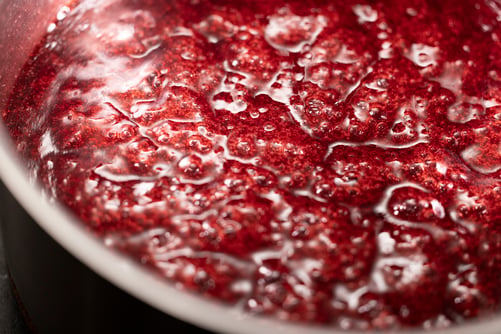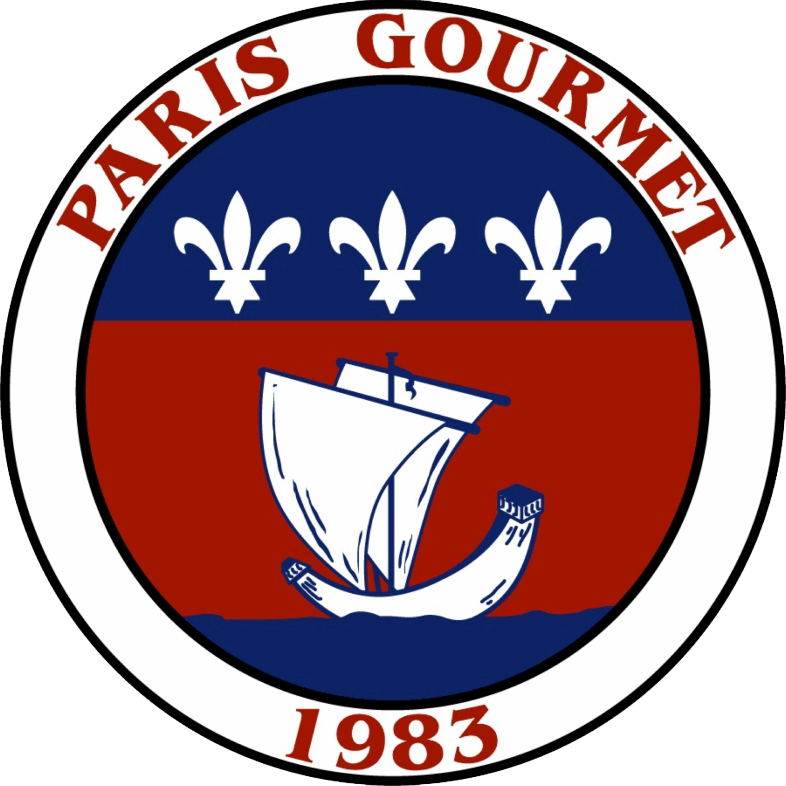Iconic Desserts: Fruit Jellies
- By Charlotte Brown
- March 13, 2024
Text by Eric Birlouez, photographs by Xavier Ferrand
Sources: various websites and the Dictionnaire de la gourmandise. Annie PERRIER-ROBERT. Robert Laffont. 2012
An essential product in the windows of artisans
Obtained from the cooking of a mixture of sugar and fruit pulp, this delicacy was originally designed so that fruit could be eaten outside its harvesting period Today, the Code des usages de la pâte de fruits, published in 1999, specifies that fruit pulp must represent at least 50% of the weight of the finished product. On the other hand, the fruit used, as well as the appearance and shape, can be highly varied: fruit jellies can be cut from a sheet (into squares, rectangles, disks, etc.) or poured into a mold; they can be candied, glazed or rolled in sugar, or even shaped like miniature fruit. Traditionally, acidic fruits rich in pectin were the most commonly used: apples, quinces, redcurrants, plums, blackcurrants and apricots... When the fruit jelly contains only the pulp of a single fruit, it is designated by the name of that fruit (“raspberry jelly”); when made from multiple pulps,should be called for example, “apricot fruit jelly” or “apricot flavor”.
An Ancient but Obscure Origin
We don't know the name of the confectioner or even the people who invented fruit jellies, nor when these sweets were first created. They are only mentioned in texts from the 15th century onwards. But the very first initiators may well have been the Egyptians: we know that they crushed and kneaded figs before inserting the resulting dough into molds. In ancient Greece and Rome, doctors recommended crushed fruit mixtures to their wealthy patients. In the first century, the Greek Héras also wrote down a recipe for a paste of blackberries mixed with honey (sugar was unknown in the Mediterranean basin at this time).
Fruit jelly was first used as a medicine
In the following century, Galen, the great physician of the Roman Empire, explained how to prepare a quince jelly with health benefits. In medieval Andalusia, the author of an Arabic-language medical treatise asserted that the same quince jelly "lightens the stomach that suffers from bile, removes bitterness from the mouth and stimulates the appetite.” Like sugar, spices and other rare and precious products, fruit jelly was first a medicine before becoming a food...From the end of the Middle Ages, and especially during the Renaissance, the European social elite's fondness for sugar boosted the manufacture of fruit jellies (and many other sweet products and desserts).

“Dry" jams
In the 14th century, fruit jellies were referred to as "dry jams" (“liquid” jams being the kind we use on toast today). In his "Théâtre d'agriculture et mesnage des champs", published in 1600, the great agronomist Olivier de Serres recommends eating peach, apricot, plum, cherry, pear and apple jellies. From this time onwards, the most famous apricot jellies came from Auvergne, mainly from Clermont and Riom.
Some local specialties contain liqueur
In addition to those made with fruit, pistachio, ginger, orange and lemon blossom jellies were also made... However, it wasn't until the early 19th century that fruit jellies, whose price had fallen as sugar became commonplace, became a regular fixture at the tables of the bourgeoisie, who took power with the Revolution. A new type of fruit jelly was created, known as "au transparent": before being mixed with sugar and baked, the fruit juice was first clarified by adding beaten egg whites and gum arabic. From the beginning of the 20th century, fruit jelly began to conquer every household: cookery books of the time offered a wide range of recipes.
A wide variety of local specialties
Before the globalization of trade in products, local fruit was always favored (this is still partly the case with today's artisan confectioners). In Grenoble, blackberry pastes were made, in Tarbes, chestnut jellies (with Pyrenean chestnuts and rum as flavoring) and in Réunion, mango, pineapple, guava, papaya and passion fruit jellies. Some local fruit jelly specialties contain liqueur. Such is the case with guignolette d'Auvergne, a cherry jelly filled with a kirsch cherry. In the Vosges, apricot jellies flavored with kirsch are made, while in Colmar raspberry jellies with raspberry liqueur are preferred. In Angers, pavés d'Anjou are flavored with Cointreau ©.
Today's health-conscious consumers are increasingly demanding fruit jellies that are not coated in sugar, or even which are free from flavorings, gelatin and preservatives. And our artisan confectioners are constantly coming up with new creations: raspberry and fresh mint, sweet orange and green mandarin, apricot and lime, passion fruit and tarragon, strawberry and basil... Enough to satisfy even the most demanding palates and those with a thirst for novelty!
